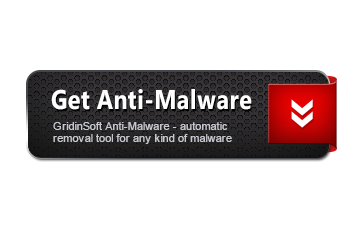The Trojan.MSIL.Inject.acgfi is considered dangerous by lots of security experts. When this infection is active, you may notice unwanted processes in Task Manager list. In this case, it is adviced to scan your computer with GridinSoft Anti-Malware.

Gridinsoft Anti-Malware
Removing PC viruses manually may take hours and may damage your PC in the process. We recommend using GridinSoft Anti-Malware for virus removal. Allows to complete scan and cure your PC during the trial period.
What Trojan.MSIL.Inject.acgfi virus can do?
- Behavioural detection: Executable code extraction – unpacking
- SetUnhandledExceptionFilter detected (possible anti-debug)
- Yara rule detections observed from a process memory dump/dropped files/CAPE
- Creates RWX memory
- NtSetInformationThread: attempt to hide thread from debugger
- Anomalous file deletion behavior detected (10+)
- Guard pages use detected – possible anti-debugging.
- Dynamic (imported) function loading detected
- Performs HTTP requests potentially not found in PCAP.
- Enumerates running processes
- Expresses interest in specific running processes
- Reads data out of its own binary image
- A process created a hidden window
- CAPE extracted potentially suspicious content
- Drops a binary and executes it
- The binary contains an unknown PE section name indicative of packing
- The binary likely contains encrypted or compressed data.
- Executable file is packed/obfuscated with Themida
- Authenticode signature is invalid
- A scripting utility was executed
- Detects Sandboxie through the presence of a library
- Attempts to remove evidence of file being downloaded from the Internet
- Checks for the presence of known windows from debuggers and forensic tools
- Checks for the presence of known windows from debuggers and forensic tools
- Tries to unhook or modify Windows functions monitored by Cuckoo
- Created a process from a suspicious location
- The following process appear to have been packed with Themida: C20F107EE0F9CACE41E5.mlw
- A script process created a new process
- Creates a hidden or system file
- Detects Bochs through the presence of a registry key
- Checks the version of Bios, possibly for anti-virtualization
- Checks the CPU name from registry, possibly for anti-virtualization
- Detects VirtualBox through the presence of a registry key
- Anomalous binary characteristics
How to determine Trojan.MSIL.Inject.acgfi?
File Info:
name: C20F107EE0F9CACE41E5.mlwpath: /opt/CAPEv2/storage/binaries/f845c19c69125776a4c0af5d80c58be182a2b7dad4c1ba4ab30f952d27174479crc32: 3CCDEDDEmd5: c20f107ee0f9cace41e53ee4d46e1c65sha1: 55e7cb76c05a85ca67a89f8aebc515455b70444dsha256: f845c19c69125776a4c0af5d80c58be182a2b7dad4c1ba4ab30f952d27174479sha512: 7e35fc6d4175f76dc61b12344d8129239629be284cdd7452cbfc89fc81cc218c954cb561b57e0bcafc5c03d19278febd917ec2791c7d8746a9f2d77dfa1636cdssdeep: 196608:FbP01XLZhsm9F4opwfzwSXhtDYLGAWZT4f/vQnr6TdZg:FbPaZhzr4kwrkb6q/vpZgtype: PE32 executable (GUI) Intel 80386, for MS Windowstlsh: T14586335ECEC5649AE18B5E7313B7702820859EC90ED6E53FBA45B61FB8B1B3420C6E11sha3_384: 3d1a48add7c518ace95318a71b6861ae4b14712c4223fb58d17a73c5a11a660e9302ed88821d1a5aebcd6725cf374dffep_bytes: e84b0100005389e3538b73088b7b10fctimestamp: 2022-07-06 16:40:35Version Info:
Translation: 0x0000 0x04b0FileDescription: FileVersion: 0.0.0.0InternalName: teste.exeLegalCopyright: OriginalFilename: teste.exeProductVersion: 0.0.0.0Assembly Version: 0.0.0.0
Trojan.MSIL.Inject.acgfi also known as:
| Bkav | W32.AIDetect.malware1 |
| tehtris | Generic.Malware |
| DrWeb | BackDoor.RevetRat.2 |
| FireEye | Generic.mg.c20f107ee0f9cace |
| McAfee | Artemis!C20F107EE0F9 |
| Cylance | Unsafe |
| K7AntiVirus | Trojan ( 00565c4e1 ) |
| K7GW | Trojan ( 00565c4e1 ) |
| Cybereason | malicious.6c05a8 |
| BitDefenderTheta | Gen:NN.ZexaF.34786.@F0@amX!C0e |
| Symantec | ML.Attribute.HighConfidence |
| Elastic | malicious (high confidence) |
| ESET-NOD32 | a variant of Win32/Packed.Themida.HJT |
| Zoner | Probably Heur.ExeHeaderL |
| TrendMicro-HouseCall | TROJ_GEN.R011H0CG722 |
| Kaspersky | Trojan.MSIL.Inject.acgfi |
| NANO-Antivirus | Virus.Win32.Gen-Crypt.ccnc |
| Avast | Win32:Trojan-gen |
| F-Secure | Trojan.TR/Crypt.XPACK.Gen |
| McAfee-GW-Edition | BehavesLike.Win32.Cutwail.rc |
| Trapmine | malicious.high.ml.score |
| Sophos | Mal/Generic-S |
| Ikarus | Trojan.Win32.Themida |
| Avira | TR/Crypt.XPACK.Gen |
| Microsoft | Trojan:Win32/Sabsik.FL.B!ml |
| ZoneAlarm | Trojan.MSIL.Inject.acgfi |
| Cynet | Malicious (score: 100) |
| Acronis | suspicious |
| VBA32 | BScope.TrojanPSW.Agent |
| Malwarebytes | Trojan.MalPack.Themida |
| APEX | Malicious |
| Rising | Trojan.Generic@AI.100 (RDML:DNd0MoSct7JLYdMvMkDTuQ) |
| SentinelOne | Static AI – Malicious PE |
| MaxSecure | Trojan.Malware.300983.susgen |
| Fortinet | W32/Malicious_Behavior.VEX |
| AVG | Win32:Trojan-gen |
| Panda | Trj/Genetic.gen |
| CrowdStrike | win/malicious_confidence_90% (W) |
How to remove Trojan.MSIL.Inject.acgfi?
- Download and install GridinSoft Anti-Malware.
- Open GridinSoft Anti-Malware and perform a “Standard scan“.
- “Move to quarantine” all items.
- Open “Tools” tab – Press “Reset Browser Settings“.
- Select proper browser and options – Click “Reset”.
- Restart your computer.



Leave a Comment